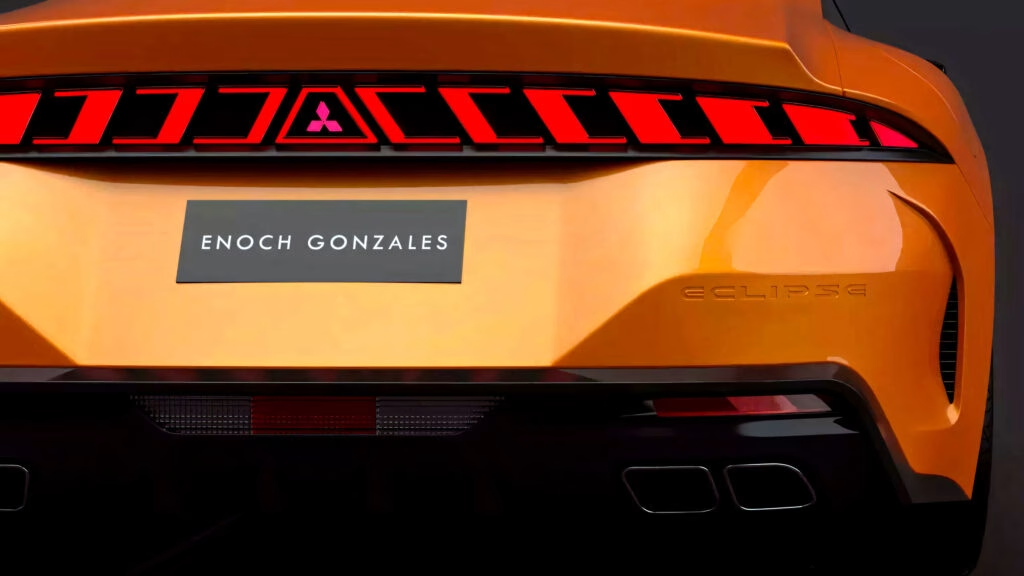Why Are Mitsubishi Eclipse Fans So Invested in a Comeback?
Ask any car enthusiast about the Mitsubishi Eclipse and you’ll likely get a wistful smile. For many, the Eclipse isn’t just a car—it’s a symbol of a golden era for Japanese sports coupes. The original Eclipse, especially the second-generation model from the mid-90s, was beloved for its blend of style, affordability, and performance. Fast-forward to today and the Eclipse name lives on, but only as a badge on a crossover SUV that shares more DNA with a Renault than the tuner icon of old. That’s left a lot of fans feeling, well, a little shortchanged.
What’s Behind Enoch Gonzales’ Vision for a Modern Eclipse Coupe?
Enter Enoch Gonzales, a designer who’s made a habit of reimagining Mitsubishi’s greatest hits. His latest digital concept takes the Eclipse back to its roots—a low-slung, aggressive coupe powered by an internal combustion engine. Gonzales’ design isn’t just a nostalgia trip. He’s blended the classic lines of the second-gen Eclipse with modern touches: think slim LED headlights, bold air intakes, and a power-domed hood. The side profile keeps the signature coupe sweep, while the rear features a full-width light bar that cleverly echoes the phases of a lunar eclipse.
It’s not just about looks, either. Gonzales imagines this Eclipse sharing a platform and powertrain with the current Nissan Z, which means a twin-turbo V6, rear-wheel drive, and—just maybe—a selectable all-wheel-drive system as a nod to the original’s rally-inspired heritage. In other words, it’s a car that could actually deliver on the promise of its badge.
How Does This Concept Compare to Mitsubishi’s Current Direction?
Here’s where things get interesting. Mitsubishi, like many automakers, is doubling down on electrified SUVs and crossovers. The current Eclipse Cross is a practical, efficient vehicle, but it doesn’t stir the soul like its coupe ancestor. According to industry data from JATO Dynamics, SUVs and crossovers now make up over 45% of new car sales in Europe, so it’s easy to see why Mitsubishi is following the money. But that leaves little room for passion projects like a new Eclipse coupe.
Gonzales’ concept, then, is a kind of love letter to what could be. It’s a reminder that there’s still a market—however niche—for affordable, fun-to-drive sports cars. Just look at the resurgence of models like the Toyota GR86 and Nissan Z. Both have found loyal followings, proving that the appetite for sporty coupes hasn’t disappeared, even if it’s not the main course anymore.
What Details Make This Digital Eclipse Stand Out?
It’s the small touches that really set Gonzales’ Eclipse apart. The segmented rear light bar isn’t just a design flourish; it’s a subtle nod to the car’s namesake. The quad exhaust tips and sculpted diffuser leave no doubt about the car’s performance intentions. And the Eclipse script stretched across the rear bumper? Pure nostalgia, executed with restraint.
Inside, while Gonzales hasn’t published detailed renderings, it’s easy to imagine a driver-focused cockpit with modern tech and retro cues—think digital gauges with analog-inspired graphics, supportive bucket seats, and just enough physical controls to keep purists happy.
Could a Car Like This Actually Happen?
Realistically, the odds aren’t great. Mitsubishi’s global strategy is all about volume, electrification, and crossovers. Sports coupes are a tough sell in today’s market, especially for a brand that’s spent the last decade rebuilding its reputation around reliability and value. But here’s the thing: independent design studies like this one keep the dream alive. They remind both fans and automakers that heritage matters, and that a well-executed sports car can still capture imaginations.
There’s also the not-so-small matter of alliances. Mitsubishi is part of the Renault-Nissan-Mitsubishi Alliance, which means platform and powertrain sharing is more feasible than ever. If Nissan can make the Z work, and Toyota can revive the Supra with BMW’s help, who’s to say a new Eclipse is impossible?
What Does the Ongoing Nostalgia for the Eclipse Tell Us?
The continued fascination with the Eclipse isn’t just about the car itself. It’s about what it represents: a time when Japanese automakers took risks, built cars for enthusiasts, and made performance accessible. This nostalgia is powerful. According to a 2023 survey by Hagerty, interest in 1990s and early 2000s Japanese sports cars has surged, with values for clean examples climbing steadily year over year.
For many, the Eclipse was their first taste of turbocharged power or all-wheel-drive grip. It was the car they modified in their parents’ driveway, the one that starred in street racing games and movies. That kind of emotional connection doesn’t fade easily.
What’s the Real Value of These Independent Design Studies?
Even if Mitsubishi never builds a new Eclipse coupe, concepts like Gonzales’ serve an important purpose. They push the conversation forward, challenge automakers to think beyond the next crossover, and keep the enthusiast community engaged. Sometimes, all it takes is a clever rendering to spark a groundswell of support—or at least a few heated debates on car forums.
The big takeaway? Reviving an icon like the Eclipse isn’t about perfection—it’s about smarter adjustments. Start with one change this week, and you’ll likely spot the difference by month’s end.

